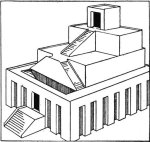
Worksheets and No Prep Teaching Resources
Reading Comprehension Worksheets
Ancient Mesopotamia

Ancient Mesopotamia
 Worksheets and No Prep Teaching Resources Reading Comprehension Worksheets Ancient Mesopotamia |
 Ancient Mesopotamia |
| edHelper's suggested reading level: | grades 9 to 11 | |
| Flesch-Kincaid grade level: | 9.22 |
|
The Sumerian Civilization
By Vickie Chao |

|
 1 Egypt, India, China, and Greece all had very long histories dating back thousands of years. Yet, none of them were as old as the Sumerian civilization in Mesopotamia.
1 Egypt, India, China, and Greece all had very long histories dating back thousands of years. Yet, none of them were as old as the Sumerian civilization in Mesopotamia. |
Create Weekly Reading Books
Prepare for an entire week at once! |
| Leave your feedback on The Sumerian Civilization (use this link if you found an error in the story) |
 |
Ancient Mesopotamia
|
 |
High School Reading Comprehensions and High School Reading Lessons
|
 |
Social Studies
|